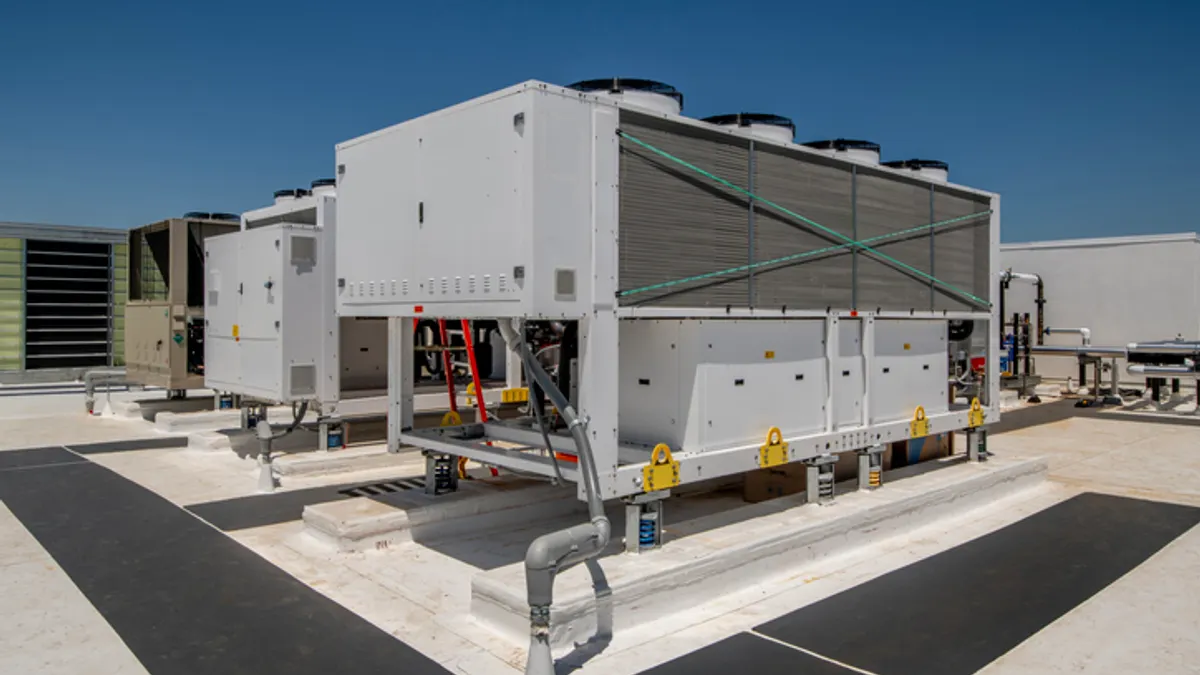Hybrid work has sparked a balancing act between employers and employees, driving facility leaders to create workplaces that satisfy both parties' needs, according to a series of global workplace and occupancy insight reports by CBRE and other analyses by integrated real estate management firms.
Employees have become accustomed to choosing where to work, so employers must think about how flexible space can help them draw workers to the office, leaders at JLL said during a webinar on commercial real estate trends and rethinking space for smarter workplaces in 2025.
Buildings need spaces, services and other amenities that are specific to the business to draw employees into the office, according to Chris Zlocki, head of client experience and executive vice president of occupier services at Colliers. “It’s really this whole microcosm of the environment that the office is in, the building itself, the office itself and the work you’re doing,” he said.
In the past, you could define a triple-A property based on the building itself, the space provided and amenities associated with it. Today, there is more complexity, with employees looking more at the environment or neighborhood, Zlocki told Facilities Dive
“When it comes to transportation, walkability, outdoor space, great amenities that are not only in the building but surrounding it, that becomes the first step in defining what’s working,” he said. “Because we’re still competing with a hybrid world. What’s the value of people coming into the office if they feel that they don’t need to come in?”
Obsolescence risk is a growing issue in the office sector, too, with tenants moving from lower-class to higher-class buildings, JLL said in a May report. Factors that lead to obsolescence include a lack of amenities, the absence of structural flexibility and poor energy performance, the report says.
The spread in vacancy rates between prime and non-prime vacancy rates grew by 4.4 percentage points in Q1, CBRE said in its Q1 U.S. office report, reflecting a strong preference for quality buildings in well-connected, amenity-rich locations, CBRE said. The rates are now 14.8% for prime and 19.2% for non-prime. Owners and operators must consider the limited demand for class B and C assets or the lack of supply of top-tier assets in future forecasting and long-term planning, JLL said in its report.
To help navigate these challenges, Colliers in May launched Portfolio AI, a tool within the Colliers360 business analytics suite that gives building owners and portfolio managers analytics, predictive modeling and market insights that can help them optimize space.
By using AI-assisted cost modeling to look at real estate footprints, Portfolio AIcan help operators with site-specific recommendations and give advice on what workspaces can be consolidated, which properties can be eliminated and what capital expenditures make sense, Colliers says in a May 27 release.
Prior to Portfolio AI’s launch, Colliers tested it across a global dataset of over 1,500 locations totaling approximately 100 million square feet and about $1.5 million in annual real estate costs. Almost half of the locations could benefit from strategic adjustments recommended by the tool, with approximately 10% in cost savings, Colliers said.
“What we’re trying to do is help clients get as rational as they can be in terms of the amount of spend they have, as well as balancing that against the right type of employee experience,” Zlocki told Facilities Dive. “What is the capital expenditure that goes along with a move and the ROI associated with it? Everything has an efficiency gain opportunity, and that’s really what we’re trying to identify.”
To ensure this, facility teams need a better relationship with the businesses they work with, Zlocki said. “One of the key challenges I’m seeing is in the alignment between real estate facility teams assessing and really having a handle on where the future of those businesses are going,” he said.
“[Facility teams] should be asking questions like ‘What is your implementation plan? What is your future headcount growth, or the variability in that growth based on the use of technology?” Zlocki said.
If they can’t answer those questions, they may be leaving an opportunity on the table when they look at their next lease opportunity three to five years down the road, he said.
“There are a lot of operational functions that are going to be affected by the use of AI,” he said. “The real question is when is that going to happen, and when is the business projecting to use that. If the business doesn’t have an answer for that, then I think you’ve done your job as a real estate facilities leader to be able to push them to think about the use of the technology and the evolution of their business operations.”



















